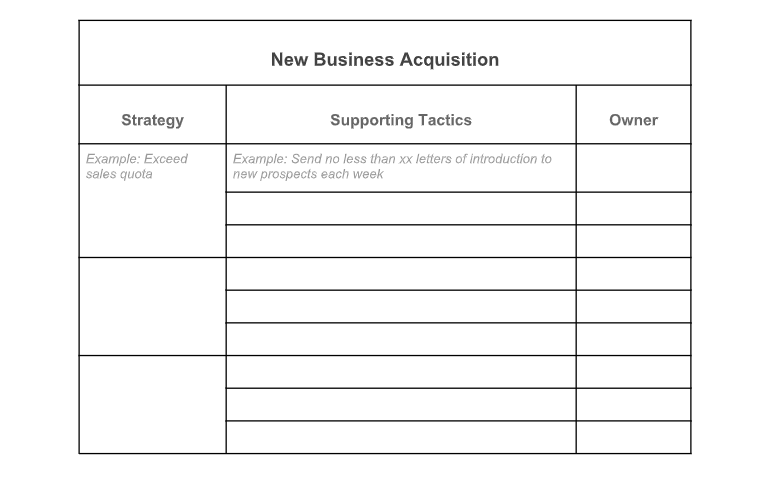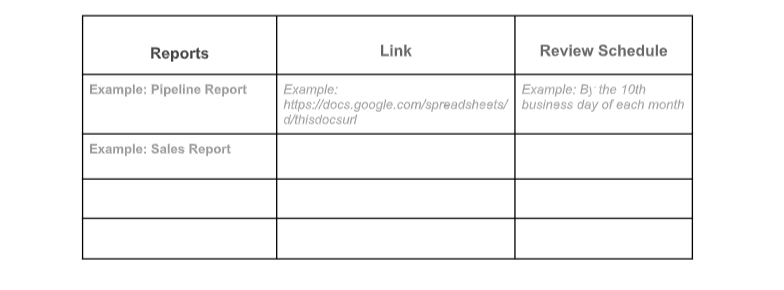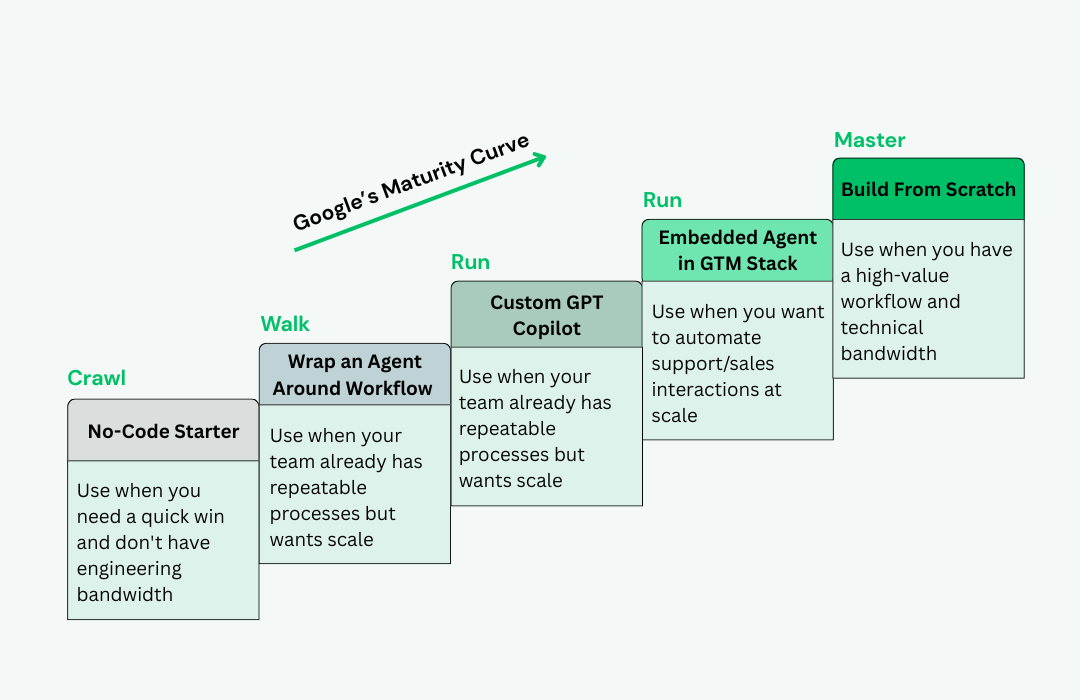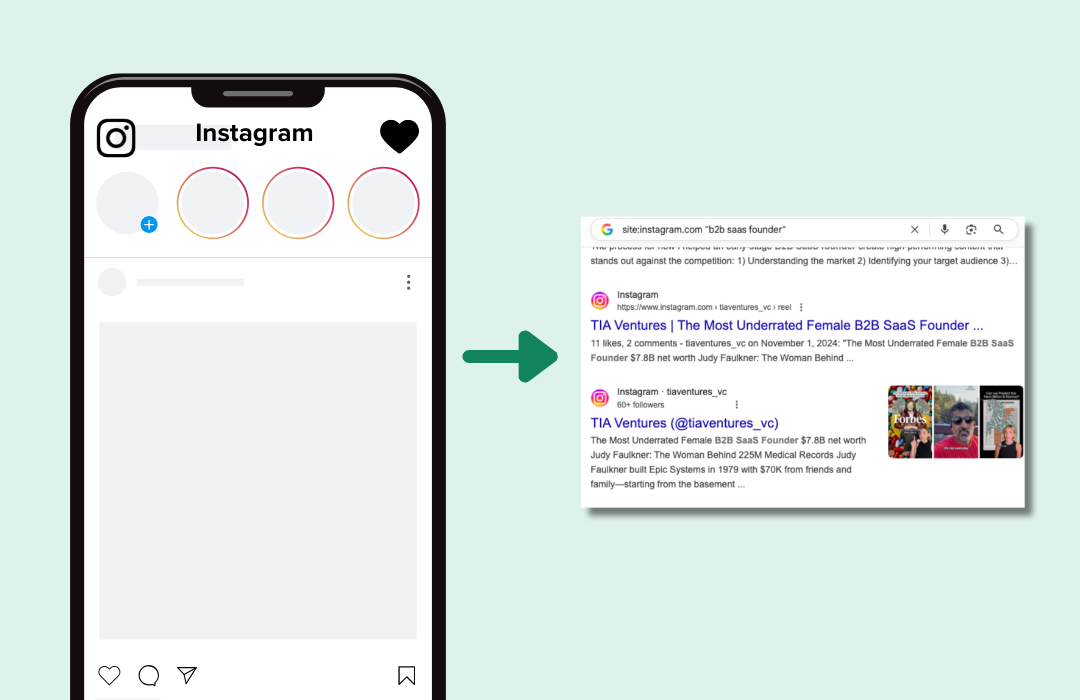True success always starts with a plan. And for sales success, nothing beats a strategic sales plan.
Designed specifically to help your sales team drive more sales, a sales plan can show you where you’re at, where you want to be, and even more important, how to get there.
The question, of course, is how to create a sales plan that actually impacts sales. Keep reading for tips and a template to quickly and confidently create a strategic sales plan for your business.
Table of Contents
- What Is a Sales Plan?
- What Is Included in a Sales Plan?
- Sales Plan Examples: There’s No One Right Way
- The Benefits of a Sales Plan
- How to Write a Sales Plan
- 7 Tips to Help You Create a Sales Plan
- Sales Strategy Template
- Selling Your Sales Plan
- Final Remarks
What Is a Sales Plan?
A sales plan is a strategy document that lays out a company’s plan for improving sales results in a specified time period. A sales plan makes it possible for everyone on the sales team to see the big picture, share the same overall objectives, and work the same plan to achieve them.
It usually includes:
- Specific revenue and performance goals for a given period
- The strategies for achieving them
- The resources and activities required to carry out those strategies
What Is Included in a Sales Plan?
A sales plan covers a lot of important aspects of business growth: revenue goals, selling methods and metrics, target customers, current sales force capabilities, and more.
Specifically, it covers 9 pieces of strategic information.
1. Executive Summary and Scope of The Sales Plan
This section gives a short summary of the document, focusing on goals and the strategies to achieve them. It also states the specific period and other parameters covered by the plan.
2. Business Goals and Revenue Targets
This section clearly establishes revenue targets and may include associated business goals (e.g., optimize lifecycle value through customer success programs, etc). Classifying revenue figures based on different categories (such as line and territory) helps clarify the document.
3. Review of Prior Period Performance
This section presents a recap of the prior period’s performance, identifying mistakes as well as decisive actions that led to a positive outcome. The overarching goal is to optimize the sales plan by adopting inputs and techniques that work.
4. Market and Industry Conditions
This section provides a summary of the market trends that have a high likelihood of influencing sales performance.
5. Strategies, Methodologies, and Tactics
This section recommends the best selling techniques, communication sequences, and playbooks for the specific company.
6. Customer Segments
This section cites all the potential revenue-generating, omnichannel opportunities available for the brand, such as the following:
- Referrals
- Renewals
- Upsells
- Cross-sells
- New Prospects
- New Segments
The document should describe new segments of the addressable market when they arise.
7. Team Capabilities, Resources, and Upgrades
This section provides a summary and describes the current state of all production inputs (human resources, tech software, specialized sales team, etc.,) required to process and close sales details.
8. Action Plan For Teams and Individuals
This section assigns tasks, activities, and responsibilities to different teams and individuals. Tasks include prospecting activities, meeting appointments, and product demos/presentations.
9. Performance Benchmarks & Monitoring
This section lays out performance metrics to track the systems and processes that help monitor these metrics.
Sales Plan Examples: There’s No One Right Way
What usually comes to mind when you think about sales plans?
If you’re like most people, it’s the annual sales plan or weekly sales plan — broad strategic and tactical documents mapping out the plan for everything sales-related.
But there are as many different types of sales plans as there are needs for a sales plan.
We’ll go over a few sales plan examples to get you started in the right direction.
30-60-90-day Sales Plan
There’s the 30-60-90-day sales plan. This is designed to help a new salesperson or sales manager get up to speed quickly in their first quarter on the job. The plan includes milestones they’d need to achieve at the 30th, 60th, and 90th day of their ramp-up.
Generally, the 30-60-90-day sales plan can be broken down into 3 sections:
Day 1 to 30:
Learn and understand everything you can about a company from their processes, customers, products, the competition to procedures.
Day 31 to 60:
Evaluate and put your plan into action. Analyze their current processes and assess changes.
Day 61 to 90:
Optimize and make the plan better. It is time to take action. Initiate an action plan. Implement any new strategies and procedures you’ve come up with.
Sales Plan For Specific Sales
A sales process involves using different tactics to approach and convert a prospect into a paying customer.
Another type of sales plan you’ll see a lot is an individual sales plan for specific sales tactics, such as prescribed call sequences, email follow-up frequency, and meeting appointments. This type of plan is similar to an annual/weekly sales plan, but it focuses on measuring and improving results for just one goal or task.
Territory Sales Plan
Meanwhile, sales managers who oversee a geo-location or region often use territory sales plans to give sales directors and VPs more visibility into their sales efforts.
This is a workable plan used to target the right customers and implement goals to increase the income generated and sales over time.
A good territory sales plan will:
- Make your team more productive
- Reduce operational costs
- Increase the number of generated sales
- Improve your customer coverage
- Improve working relationships between clients and managers
Note: It is essential to work on your territory sales plan and avoid making constant changes. Unnecessary changes can tamper with your productivity and your ‘territory’ in general.
Sales Training Plan
And there are sales plans for every area of sales. Sales Enablement might have a sales training plan, for example, and Revenue Ops might have a sales compensation plan.
A sales training plan can be used as a roadmap for different sales training programs. It can be grouped according to positions held in an organization, assets, sales record etc.
A sales compensation plan is an umbrella for base salary, incentives and commission that make up a sales representative earnings.
Therefore, you can schedule a sales training plan to talk to your sales team about the importance of a sales compensation plan and how they can use it to increase revenue and drive performance.
Sales Budget Plan
Lastly, a sales budget plan gives you a sales forecast for a given period based on factors that could impact revenue — like industry trends and entry to a new market segment. Similar to a traditional sales plan, they cover the staff, tools, marketing campaigns, and other resources needed to generate the target revenue.
A good sales budget plan should include the following:
Sales forecasting:
The process of estimating future sales by predicting the number of units a salesperson or team can sell over a certain period, i.e. week, month, year, etc.
Anticipated expenses:
Include the number of costs your team is likely going to incur. Remember to have even the smallest expenses to estimate the average sales.
Expect the unexpected:
Always leave room for unforeseen circumstances in your sales budget. For example, new packaging expenses, new competitive market strategies etc.
The Benefits of a Sales Plan
A sales plan does deliver side benefits (such as promoting discipline and diligence), but it’s really about making sure your sales don’t dry up over time. Which means it’s not optional.
The reality is this: Most of us aren’t planners. We talk a good game, but nothing happens until we’re accountable.
Without a written plan, it’s just talk.
So the first benefit of a sales plan is that it helps you execute on all your best ideas. But that’s not all. A good sales plan will also help you:
- Keep your sales team on the same page, aiming for the same target and focusing on the same priorities.
- Clarify your goals and revenue objectives for a given period.
- Give your team direction, focus, and purpose.
- Adopt a unified set of strategies and playbooks to reach your business and revenue goals.
- Know what your team capabilities are and be able to isolate your needs, from tools to talent and other resources.
- Inspire and motivate stakeholders.
- Track your progress and optimize performance over time.
How to Write a Sales Plan
A sales plan is a pretty straightforward document. It doesn’t need to be written in a formal language or pass your compliance review. It just needs to outline your plans for the coming period, whether that’s a year, a quarter, or a month.
While there are 9 sections in the sales plan template, much of the document simply validates your ideas. The most important pieces of information are:
1. Your goals
Setting smart goals for you and your team is an essential part of creating a sales plan. I believe the biggest mistake you can make when setting goals is solely focusing on numbers.
Smart sales goals should be actively focused on. If it helps, use goal-setting and planning frameworks such as SMART (Specific, Measurable, Achievable, Relevant, Time-bound). Create goals that stretch your capabilities, but that seems doable based on your new strategy.
2. Your SWOT analysis
SWOT — short for Strengths, Weaknesses, Opportunities, and Threats — is one of the best frameworks for analyzing your sales team’s strengths, weaknesses, opportunities, and strengths. It helps you to build a bulletproof wall around your plan.
You’ll be able to address what you’re lacking, the areas that need improvement, identify your USP (Unique Selling Point), come up with Value-Based Selling, and your most vital points and how you can exploit them to your advantage.
3. Your strategy
Your sales strategy should be documented to help position your products and services to differentiate your solution from competitors.
A good strategy will help you address your customers’ needs in every stage of your sales plan. For better sales, you can balance inbound and outbound sales strategies for even higher sales.
4. Your tactics
Be aware, though, it’s not just a wish list or a collection of ideas. Your sales plan should be based on actual field data and only use benchmarks and quantities that are measurable. Be clear. Be specific. Be actionable.
Which brings me to another point: A good sales plan is realistic.
It’s fine to have a 5-year goal of hitting $10B. But what about now? Figure out exactly what your current numbers are, and set your targets based on those numbers.
7 Tips to Help You Create a Sales Plan
I already mentioned that your sales plan doesn’t have to be a formal document. But it does need to be clearly written, so all team members and stakeholders understand the plan.
Tip #1: Base it on in-depth and up-to-date research
You need relevant statistics and trends in your niche, industry, and ideal customers. Remember, markets and customers are in a constant state of flux. There’s nothing worse than stubbornly chasing prospects who aren’t a good fit anymore while ignoring entire market segments that show a rising demand for your solutions.
Tip #2: Use data and statistics
Use the data from your in-depth research to identify problem areas, find points of opportunity in your sales process, and validate your assumptions and ideas.
You can also use the data to come up with accurate metrics and figures to help predict your sales plan’s outcome.
Tip #3: Verify your facts
Accuracy matters!
Don’t rush! Facts and figures are essential, especially to stakeholders. One simple mistake and your entire plan come tumbling down.
Ensure you take time to review your facts, figures, and forecasts before finalizing the document.
Tip #4: Get tactical
Break the overall sales action plan into tactical plans for individual areas of sales:
- SDRs and account executives
- Sales operations
- Sales enablement
- Customer success
This may require collaboration with cross-functional teams such as marketing, customer support, and product teams.
Tip #5: Use Historical Performance Data
In sales, you can use the past to dictate the future. Historical data will help you set targets for the current period. For example, what were your previous revenue targets? Did you hit them? Why or why not? This information can help you set achievable goals for your current sales plan and know the mistakes to avoid.
Tip #6: List The Tracking Methods You’ll Use
Highlight the tracking methods you’ll use to keep your plan moving forward. That includes performance metrics, monitoring techniques, software, tools, and selling strategies for your business model.
Tip #7: Build a Strong Case For Your Proposed Budget
Stakeholders and superiors are impressed with cold-hard facts. Therefore, having a strong detailed case for your budget will help your sales plan smoothly sail through.
Not only will you outline your plans for the coming period for your budget, but you’ll also need to detail the costs. Be sure to include an ROI analysis for any new tools or talent you think you’ll need.
Sales Strategy Template
Are you ready to write your own sales strategy? Here is a sales plan template to help you get started. Here’s how to use the sales plan template to make it useful to you:
Start by using the Sales Plan Template we’ll give you in the next section. Just follow the prompts in the template, so you know what information is needed in each section. Don’t try to be fancy. Use simple language. Focus on being specific and clear.
Then share information in whatever format works best. That may be text paragraphs, tables, lists, charts, graphics, or screenshots. You can also adapt it as needed to suit your business, your sales team, and your needs.
A sales plan should contain the following sections:
1. Executive Summary
This is your opening ‘statement’. It is a formal summary that sum ups the contents of your strategy.
When writing your executive summary, keep it short, and precise. It should be one page or two. Ensure it gives an overview of what is included in your plan. It should talk about:
- Your goals
- The strategies you’ll implement to achieve your goals
- The time-frame you expect to achieve your plan
- The scope of your plans
2. Business Goals With Revenue Targets
This section talks about the revenue target and associated business goals. You can classify revenue figures according to different categories to clarify the sales strategy.
For example, for each goal, you can enter the current outcome and targeted outcome as illustrated in the table below:

3. Review of Past Performance
Take a trip down prior period performance. Note the mistakes that negatively affected the outcome and their strengths which positively impacted the general outcome.
Your goal is to identify the strategies and tactics that work.
4. Specific Strategies, Methods, and Playbooks
List the specific sales strategies, methods, and playbooks you’ll use to achieve the goals listed above.
5. Customer Segments/ Buyers Persona
This section talks about potential revenue-generating streams and different opportunities available for the company and new markets. Remember to include upsells, referrals, and renewals.
6. Team Capabilities and Resources
Here, provide a summary and describe the current production inputs required in the sales process, i.e., human resources, specialized software, sales team, etc.
7. Action Plan
The action plan requires you to set specific strategies and supporting tactics that will be used to achieve a particular goal, i.e. new acquisition. Assign different activities and responsibilities to teams who will run that particular action.
Below is an example of an action plan table:

8. Sales Tools
Go ahead and list the tools you’ll use to ensure the sales plan runs smoothly and all sales processes will be managed using these tools.

9. Performance Benchmarks
This is the last section of your sales plan. It lays out the performance metrics to track the process systems to help and monitor these metrics.
Also, list and provide links to used sources. Explain how the report will be generated and stored. Finally, talk about how the report will be used to review the progress made.

Selling Your Sales Plan
Okay, your sales plan is written. Great! But you’re not done yet.
Your next step is to present it to the sales team, management, and stakeholders. That’s because you need buy-in to make it happen.
When your sales team is on board, they’ll be pumped about doing their assigned tasks.
When management is on board, they’ll be excited about giving you the budget you need to turn your plan into a reality.
With buy-in as your top priority, it’s important to be prepared to give a solid presentation. In other words, sell it.
One final note: There are lots of reasons you may not get everything you ask for. There may be plans in the works you don’t know anything about yet. Or the budget may need to favor another initiative.
If you don’t get the budget you asked for, be sure to update your sales plan accordingly. The goal is to stretch your team’s capabilities, not do the impossible.
Final Remarks
Sales don’t happen without a good sales plan. Fortunately, they’re not as hard as they might seem.
Take your time identifying your biggest challenges and problem-solving to overcoming them. Once that’s done, your sales plan is simply the document that organizes your ideas.
What’s your biggest hang-up when it comes to creating a sales plan? Have you found any tricks that help? Let me know in the comments below.







